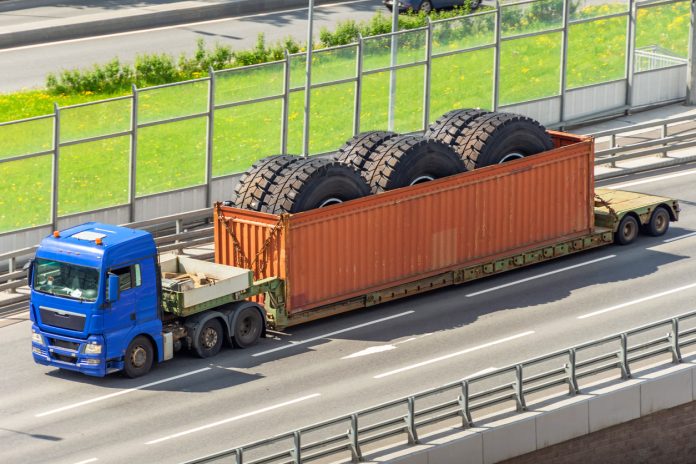For this blog, we will be looking at the basics of hauling over-dimensional (OD) loads, and the hazards they involve. When you are dispatched on an OD load, the first thing you do, even before you put the truck in gear is ensure you have all your permits in hand. Some jurisdictions allow for electronic permits (a PDF on your cell phone), while others require a printed physical copy of the permit. Read each permit in its entirety, every single word. Use a yellow highlighter to highlight the important parts of your load. Over-width regulations aren’t relevant if your load is over height, not over width. All jurisdictions have their requirements regarding flags, signage, lights, etc. Be sure you comply with the most restrictive regulations. If one province only requires flags at the widest point, and another requires flags every 10 feet, make sure you have them every 10 feet.
Don’t just eyeball every 10 feet, use a tape measure, because the scale house operator will use one when he checks your permit conditions. Your permit(s) will also provide you with an approved routing from origin to destination within each state or province. Make 100% sure that the routing is possible. Having the Saskatchewan permit valid from Saskatoon to the Manitoba border on Highway 16, then the Manitoba permit valid from the Saskatchewan border to Winnipeg on Highway 1 will cause a problem. Get it sorted out before you leave. Even with the specified routing on the permits, you are still responsible if there is an error in the permits. For example, if your load is 16 ft high, and your permit says to take Highway 1 and you hit a 15 ft bridge, you are responsible for the damages to the bridge. Always carry with you a high-quality trucker-specific road atlas and check your permitted route against the low clearance data in the road atlas. A high-quality road atlas will list the minimum clearance for the state or province, as well as all low clearances on authorized truck routes. This should be common sense, but recent events seem to be proving otherwise. If you’re hauling a 16 ft high load, and you see a sign for a bridge with 15 ft clearance, STOP!!! Permits will usually not route you under low bridges, but mistakes can happen. Getting out of a situation like this may be a colossal pain in the neck, but it’ll be far easier and less expensive than hitting the bridge.
If your permit specifies you need an escort, be sure to give the escorting driver(s) a copy of the required permits as well. If a police escort is required, chances are they will have a copy of the permits, but double check with them and ensure they have a copy and are aware of the routing.
Follow all the permit requirements to the letter, especially regarding route deviation allowances, lights, flags, speed, and hours of operation. Most permits will allow up to 2 miles off your route for access to fuel, food, repairs, etc. Some have speed limitations, some require beacons to be visible from all directions, and some have signage requirements such as a “D” sign, “oversize” or “over length”. These signs must be attached by the permits, but they are not allowed to obstruct or obscure your license plates.
If you have a scale bypass system, such as DriveWyse, you are required to stop at all open weigh and inspection stations, regardless of whether you were given the bypass.
As stated, this is the bare-bones basics of hauling OD loads. It can be broken down even further, into a single sentence:
Read, understand, and follow the instructions on your permit to the letter, and use common sense behind the wheel.



















